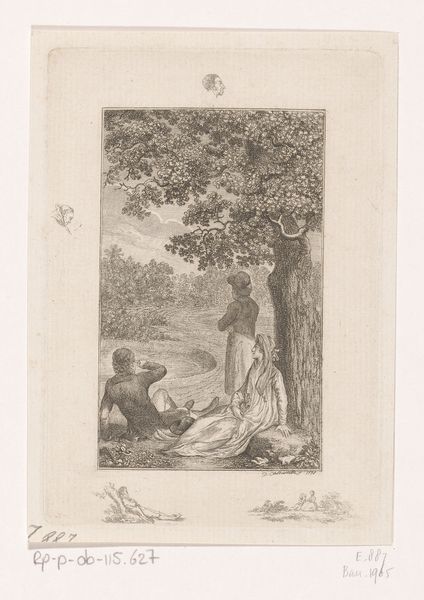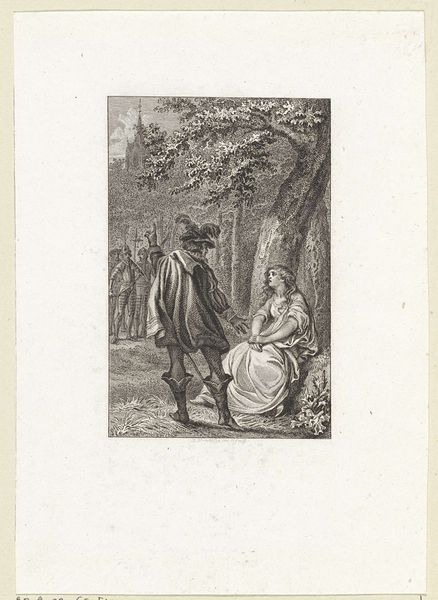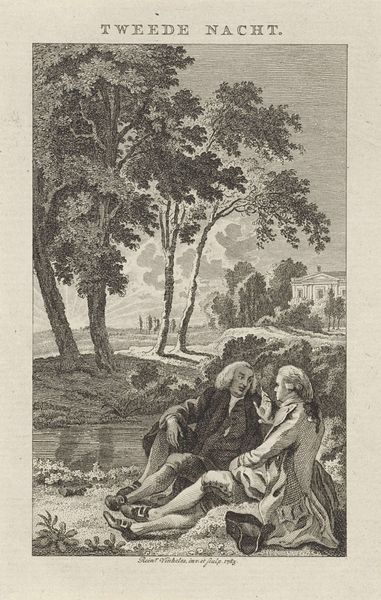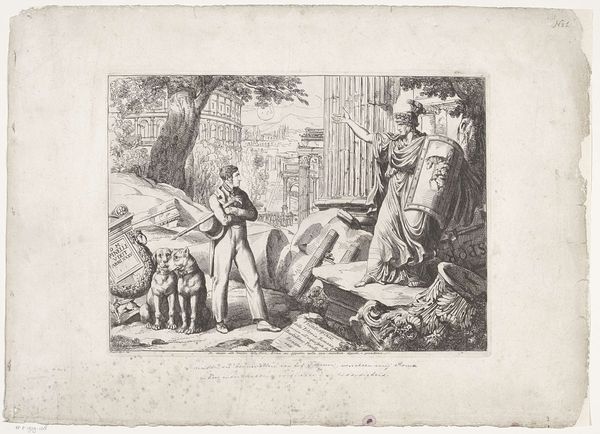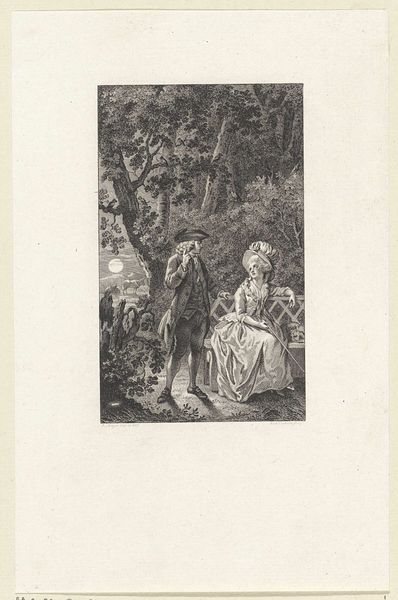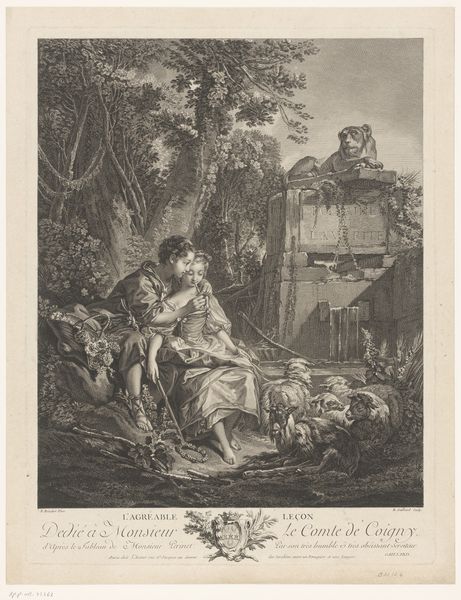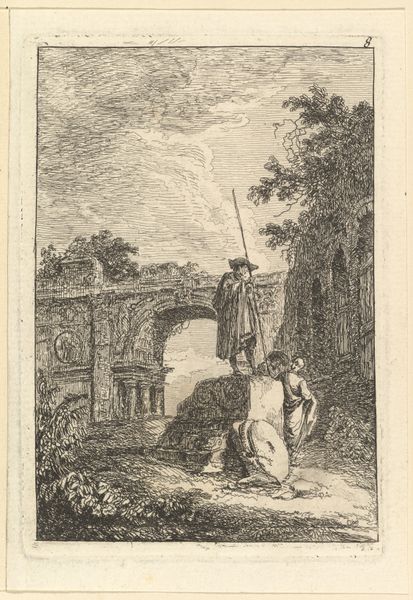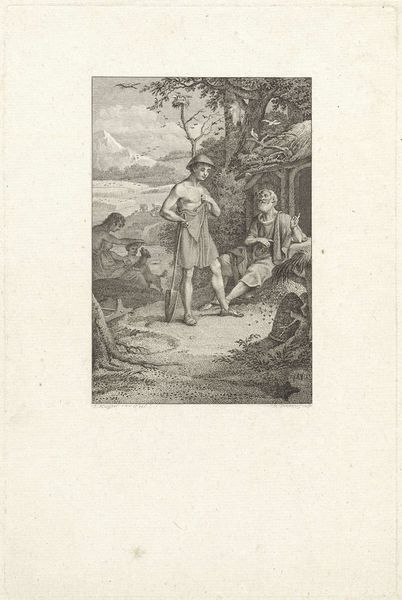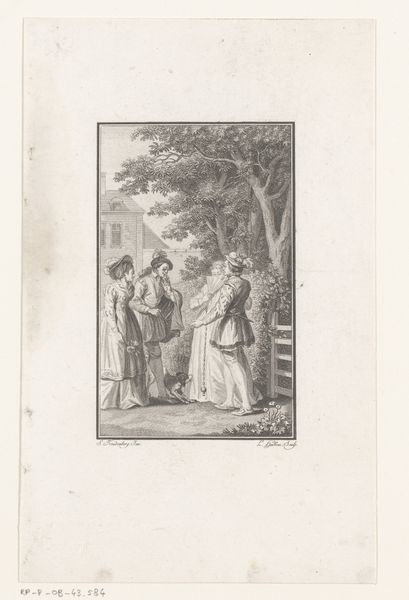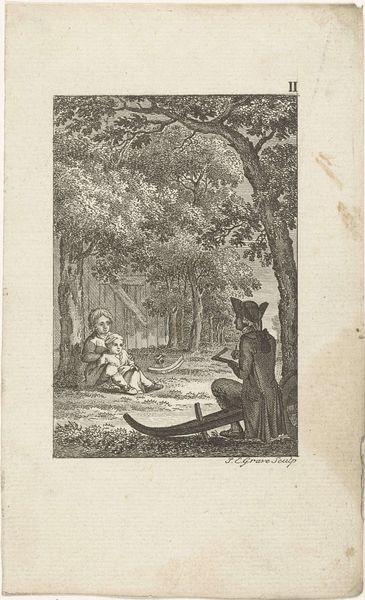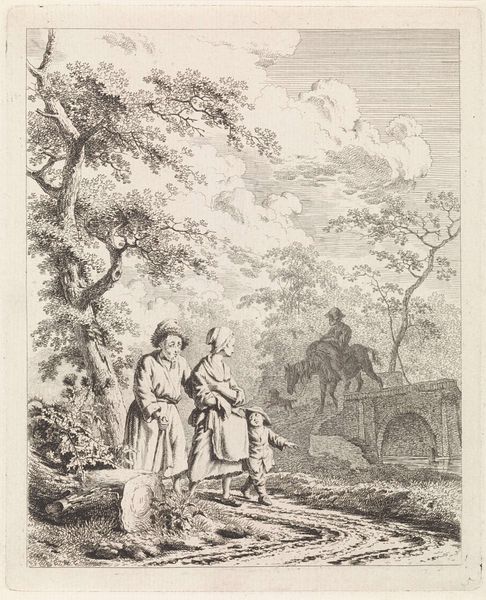
drawing, engraving
#
drawing
#
landscape
#
figuration
#
romanticism
#
genre-painting
#
history-painting
#
engraving
Dimensions: height 118 mm, width 97 mm
Copyright: Rijks Museum: Open Domain
Editor: This is "Arcadian Landscape with a Shepherd and a Woman at a Tomb," by Daniël Dupré, created between 1771 and 1817. It's an engraving. There's a melancholy feeling to it, like a scene from a lost world. What strikes you about this work? Curator: As a materialist, I'm immediately drawn to the production of this engraving. Consider the social context of printmaking in the late 18th century. It's a reproducible medium, bringing images to a wider audience than unique paintings ever could. What sort of labour was required to produce this work? Editor: That’s interesting. I hadn’t considered that angle. So, the creation of engravings provided labor, and potentially disseminated certain ideals of landscape or leisure... Curator: Exactly. Look closely at the detail. This wasn’t a casual doodle. The quality suggests skilled craftsmanship. The lines themselves are evidence of physical work. And beyond the hand of the artist, consider who commissioned this piece, who sold it, and who ultimately consumed it. Are we looking at the circulation of idealized images intended for a wealthy patron? Editor: I see what you mean! The image shows shepherds, but the whole process of engraving is far removed from the rural, seemingly simple, life they represent. Is it almost a commentary on class? Curator: Perhaps, in a subtle way. The engraving process makes even idealized pastoral scenes a commodity. Editor: Thinking about the labor and dissemination gives a totally new way to see what’s happening in the image. Thanks! Curator: Indeed! Examining art through its materials and the social dynamics of its creation and reception can reveal so much.
Comments
No comments
Be the first to comment and join the conversation on the ultimate creative platform.

